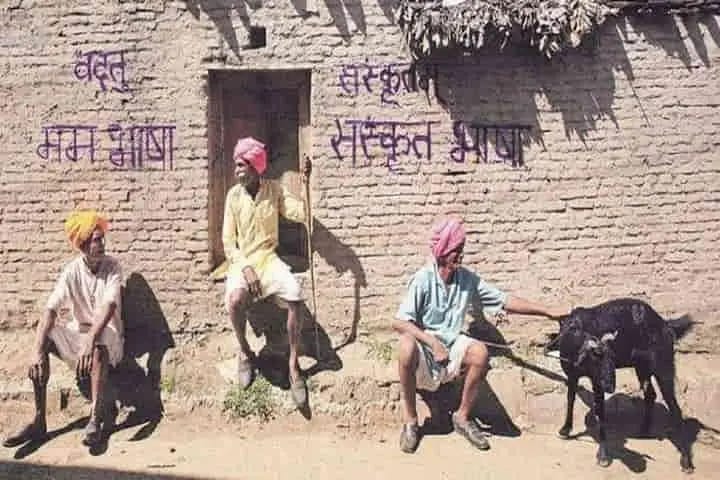Nestled in the heart of India, in the state of Madhya Pradesh, lies a small, unassuming village that stands as a beacon of cultural preservation and linguistic pride. This village, known as Jhiri, is not like any other. Here, the ancient language of Sanskrit, often referred to as the language of the gods, is not only taught but is the primary means of communication among the residents.
The Significance of Sanskrit
Sanskrit holds a special place in Indian culture and history. It is the language in which many of the country’s most important texts were written, including the Vedas, Upanishads, and various ancient scriptures. Despite its profound influence on the development of many modern Indian languages, Sanskrit has, over the centuries, become less commonly spoken, often relegated to scholarly study or religious rituals.
Yet, in Jhiri, this classical language is not just a subject of academic interest; it is the living, breathing medium of daily conversation, passed down through generations.
The Journey of Jhiri
The roots of Jhiri’s Sanskrit tradition go back several decades. The revival and promotion of Sanskrit in the village can largely be attributed to the efforts of dedicated educators and cultural activists who recognized the importance of keeping the language alive. Over time, the entire community embraced this initiative, and today, Jhiri is often celebrated as a model of linguistic and cultural preservation.
Residents, regardless of age, converse fluently in Sanskrit. It is used in schools, homes, markets, and even for casual chats. Children grow up learning the language alongside Hindi and English, ensuring that Sanskrit is not just a relic of the past, but a living tradition.
Cultural Impact
The impact of Sanskrit as the primary language in Jhiri extends beyond mere communication. It shapes the identity of the village and fosters a deep connection to India’s rich heritage. The use of Sanskrit has also influenced the village’s practices, rituals, and way of life, imbuing daily activities with a sense of spirituality and tradition.
Moreover, Jhiri has become a focal point for scholars, linguists, and tourists alike, who come to witness this rare phenomenon. The village serves as an inspiring example of how ancient languages can be revitalized and maintained in the modern world.
Challenges and Future Prospects
Despite its success, Jhiri faces challenges in maintaining its unique linguistic heritage. The influence of modernity and the increasing dominance of global languages like English pose a potential threat to the continued use of Sanskrit. However, the residents remain committed to their linguistic roots, supported by various government and private initiatives that promote Sanskrit education and cultural programs.
The future of Jhiri’s Sanskrit tradition depends largely on the younger generation’s enthusiasm and the community’s ability to adapt while preserving its linguistic heritage. With continued dedication, this village may well continue to serve as a testament to the resilience of culture and the enduring power of language.
Conclusion
Jhiri is more than just a village; it is a symbol of India’s cultural diversity and linguistic richness. In a world where languages are increasingly homogenized, Jhiri stands out as a unique community where an ancient language thrives against all odds. The village’s commitment to preserving Sanskrit offers valuable lessons in the importance of cultural preservation and the role that language plays in shaping our collective identity.

